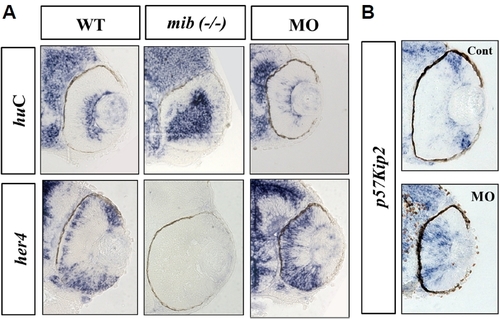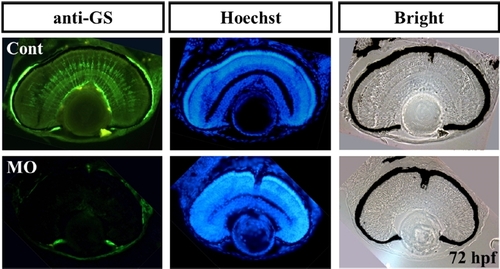- Title
-
Mind Bomb-Binding Partner RanBP9 Plays a Contributory Role in Retinal Development
- Authors
- Yoo, K.W., Thiruvarangan, M., Jeong, Y.M., Lee, M.S., Maddirevula, S., Rhee, M., Bae, Y.K., Kim, H.G., Kim, C.H.
- Source
- Full text @ Mol. Cells
|
Spatiotemporal expression of ranbp9 mRNA during embryonic development. Whole-mount EXPRESSION / LABELING:
|
|
Defects in the brain and retina of ranbp9-MO injected zebrafish embryos. (A) Control (Cont) and |
|
Molecular characterization of retinal development in ranbp9 morphants. (A) Whole-mount |
|
Characterization of glial cells in ranbp9 morphants. Retinal sections were stained with an antibody against Glutamine synthetase, which is used as a molecular marker for the Müller glia cells. Glial cell differentiation is also affected in PHENOTYPE:
|




